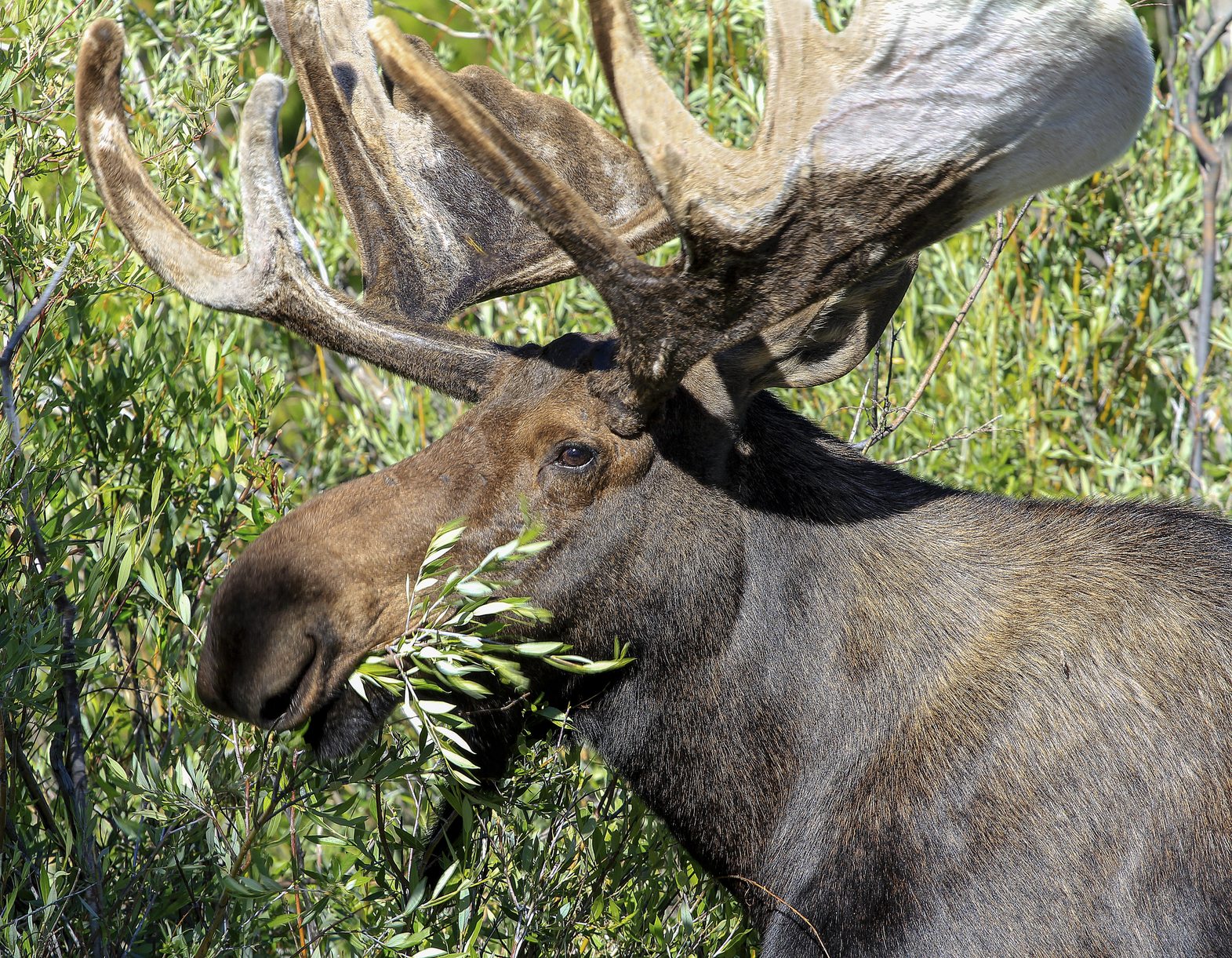Types Of Moose Deterrents – Tips On Keeping Moose Out Of The Garden


Moose in the garden is a problem that doesn't happen in all parts of North America. The cooler, northern climates are where this huge mammal resides, and they are voracious grazers who, much like deer, can decimate many of your favorite plants. There are many homemade remedies and purchased moose repellents to try, but they often have mixed success. Gardeners with a lifetime of experience of moose in yards swear that the key is mixing it up and confusing these huge grazers.
Traditional Moose Deterrents
Moose are beautiful, statuesque animals with warm eyes and vegetarian dining preferences. The latter is what might get your garden in trouble. Moose graze a host of different plants both native and ornamental. They will invade the vegetable garden or eat your hedge. Their lack of pickiness in the vegetative realm means many of your landscape plants could be in danger. Moose are huge and can dwarf a small SUV, which means keeping them out of any area can be a challenge. Moose deterrents are often homespun and have been used by generations of gardeners to prevent their damage.
Keeping large dogs seems to be something of a deterrent to moose, but due to their large size, a big bull moose will likely consider the canines just a nuisance.
Setting human hair around the garden is useful for deer if used in conjunction with other efforts, but moose don't seem to be bothered much by the dead collagen.
Many gardeners swear by making a spray with dish soap, water, and cayenne pepper or ground up hot chilies. Spray this on all your susceptible plants.
Among the more modern moose repellents may be Irish Spring soap. Some say it does the trick when chipped up and dotted around the perimeter of the garden.
Whatever methods you try, keep rotating the practices, as moose seem to get used to one repellent and adjust.
Gardening tips, videos, info and more delivered right to your inbox!
Sign up for the Gardening Know How newsletter today and receive a free copy of our e-book "How to Grow Delicious Tomatoes".
Keeping Moose Out of the Garden
Deterrents seem to have limited effect because moose are downright stubborn about getting their favorite foods. A better way is to prevent moose from entering the garden. Keeping moose out of the garden in the first place means you don't have to spray your plants with odd concoctions or chip up your shower soap.
Barrier fences should be at least 8 feet (2 m.) in height. This is not practical in many gardens, so a simpler obstructive barricade may be tried. Use dryer sheets tied to trees and shrubs to startle hungry moose away. You can also use yellow caution tape or spinning pinwheels to keep the animals on their toes and threatened enough to move on.
Another way of repelling moose in yards is to simply put chicken wire around any threatened plants.
Preventing moose in the garden may require the services of a purchased product or professional pest company. There are formulas on the market, such as Plantskydd, which have been shown to repel moose in yards. Plantskydd is an odor-based repellent whose scent is associated with predatory animals. It has a vegetable-based oil ingredient that helps the product stick to plants. The product is a sticky blood meal, which smells up to six months in winter, providing effective moose hindrance.
Many of the deer stopper repellents are also efficient but they do not retain their potency and are not as effective in cold winter months. Frequent application is necessary for full deterrent capacity.

Bonnie Grant is a professional landscaper with a Certification in Urban Gardening. She has been gardening and writing for 15 years. A former professional chef, she has a passion for edible landscaping.
-
 Looking For Plants To Give You The Soft And Fuzzies? Try These 5 Fuzzy Leaf Plant Options
Looking For Plants To Give You The Soft And Fuzzies? Try These 5 Fuzzy Leaf Plant OptionsLovers of texture, drama, silver foliage and tactile plants will adore these special sensory garden additions. These fuzzy leaf plant options will leave you all aglow
By Susan Albert
-
 Get Ready For A Summer Of Hummers! Grow These Full Sun Hummingbird Plants and Flowers
Get Ready For A Summer Of Hummers! Grow These Full Sun Hummingbird Plants and FlowersIf you’re lucky enough to enjoy a sunny backyard, make sure you are maxing out on your pollinator opportunities and grow these full sun hummingbird plants and flowers
By Tonya Barnett